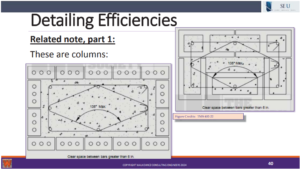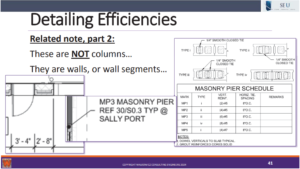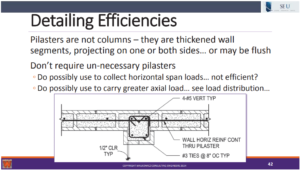Design Efficiencies for Masonry Structures – Confinement Ties
The cost of masonry construction can vary widely, in part due to inefficient designs which can drive up the labor costs on a structural project. There are many strategies which can reduce unnecessary costs in masonry construction, but are you aware of common inefficiencies engineers specify which are responsible for some of these added costs?
In the September 2024 SEU session, Scott Walkowicz, PE, from Walkowicz Consulting Engineers, presented Masonry Design and Detailing: Using Your Owner’s Money Wisely. Scott discussed the structural performance benefits and building improvements achieved through the use of masonry, as both a structure and an outer envelope. He identified ways to reduce cost and minimize material waste in masonry design and detailing. He also examined masonry details to create functional, durable, and constructable masonry assemblies.
Scott covered a number of useful tips to reduce the cost of masonry construction. One common inefficiency which drives up the cost of masonry construction is the unnecessary use of confinement ties in masonry walls or pilasters. Scott noted that confinement ties are only required by code in masonry columns and wall segments in which the primary steel is required to resist compressive loads. Many times typical masonry details are shown to include confinement ties in wall segments (commonly called piers) and pilasters when engineers assume that piers and pilasters are columns within a wall. However, pilasters are considered thickened walls and not columns and wall segments are simply wall segments. Thus, confining ties would only be required when the primary reinforcement is analytically needed to resist compression forces. As you can see in the slides below, Scott notes common details for what would and would not qualify as columns in masonry construction.
Confinement ties do add to the material costs of a project, but especially drive up the labor costs due to the extra time spent placing and tying off this additional reinforcement. In most cases, confinement ties are not needed in walls or pilasters, unless the engineers has included them in their analysis to resist axial loads. Engineers should often review their typical masonry details to be sure they are practical and efficient, and meet code requirements. Typical details which include unnecessary reinforcement should be revised to reduce project costs.





There are no comments yet, but you can be the first